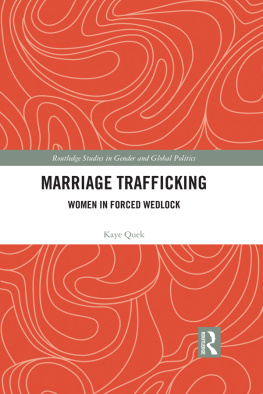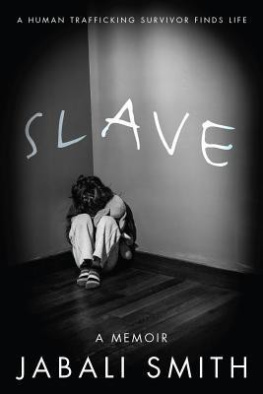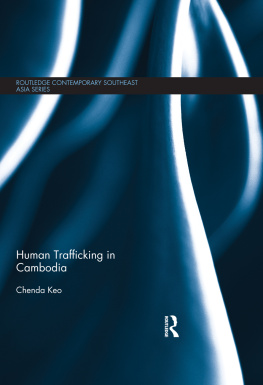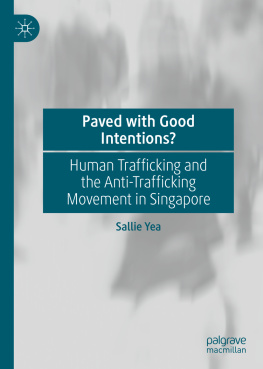
Working with the Human Trafficking Survivor
Working with the Human Trafficking Survivor fills a void in existing literature by providing students, faculty, and professionals in applied, helping disciplines, with a comprehensive text about human trafficking with a focus on clinical issues. This book gives an overview of the medical care, options for psychological treatment, and beyond. Working with the Human Trafficking Survivor is a great resource for social work, counselling, and psychology courses on human trafficking or domestic violence.
Mary C. Burke is an associate professor in the Department of Psychology and Counseling at Carlow University, where she is the program director of the doctoral program in Counseling Psychology. She has been involved in anti-human trafficking efforts since 2004 and is the founder of the Project to End Human Trafficking (www.endhumantrafficking.org).
Although there are a variety of books on human trafficking at national and international level, many fail to address victims. Burkes Working with the Human Trafficking Survivor provides information on real world treatments to better the lives of both children and adult survivors of human trafficking.
Kim McCabe, Professor and Chair, Criminology, Lynchburg College
First published 2019
by Routledge
711 Third Avenue, New York, NY 10017
and by Routledge
2 Park Square, Milton Park, Abingdon, Oxon OX14 4RN
Routledge is an imprint of the Taylor & Francis Group, an informa business
2019 Taylor & Francis
The right of Mary C. Burke to be identified as the author of the editorial material, and of the authors for their individual chapters, has been asserted in accordance with sections 77 and 78 of the Copyright, Designs and Patents Act 1988.
All rights reserved. No part of this book may be reprinted or reproduced or utilised in any form or by any electronic, mechanical, or other means, now known or hereafter invented, including photocopying and recording, or in any information storage or retrieval system, without permission in writing from the publishers.
Trademark notice: Product or corporate names may be trademarks or registered trademarks, and are used only for identification and explanation without intent to infringe.
Library of Congress Cataloging-in-Publication Data
Names: Burke, Mary C., editor.
Title: Working with the human trafficking survivor : what therapists, human service, and medical health care providers need to know / edited by Mary C. Burke.
Description: 1 Edition. | New York : Routledge, 2018. | Includes bibliographical references and index. |
Identifiers: LCCN 2018024566 (print) | LCCN 2018036818 (ebook) | ISBN 9781315684468 (Master Ebook) | ISBN 9781317409243 (Web pdf) | ISBN 9781317409236 (ePub) | ISBN 9781317409229 (Mobipocket) | ISBN 9781138924284 (hardback) | ISBN 9781138924307 (pbk.) | ISBN 9781315684468 (ebk)
Subjects: LCSH: Human trafficking victimsServices for. | Human trafficking.
Classification: LCC HQ281 (ebook) | LCC HQ281 .W67 2018 (print) | DDC 364.15/51dc23
LC record available at https://lccn.loc.gov/2018024566
ISBN: 978-1-138-92428-4 (hbk)
ISBN: 978-1-138-92430-7 (pbk)
ISBN: 978-1-315-68446-8 (ebk)
Human trafficking or trafficking in persons and modern slavery are terms often used interchangeably to refer to a variety of crimes associated with the economic exploitation of people. Human trafficking, regardless of its form, violates a number of basic human rights, as outlined in the United Nations Declaration of Human Rights (1948). While there are many articles contained within the Declaration that pertain to trafficking, the following are most relevant:
Article I
All human beings are born free and equal in dignity and rights. They are endowed with reason and conscience and should act towards one another in a spirit of brotherhood.
Article 3
Everyone has the right to life, liberty and security of person.
Article 4
No one shall be held in slavery or servitude; slavery and the slave trade shall be prohibited in all their forms.
Human trafficking occurs worldwide, and despite popular depictions in the media that primarily involve young girls, children and adults from all cultural backgrounds are trafficked. Common among trafficking survivors is their economic vulnerability, which can be caused by any number of variables (e.g., political instability, social class structure, insufficient family or other network of support). In addition to individuals being trafficked by those known to them, such as family or friends, trafficking has been associated with transnational organized crime groups, small, more loosely organized criminal networks and local gangs, violations of labor and immigration laws, and government corruption (Richard, 1999; US Government Accountability Office, 2006; Vyrynen, 2003). At the international level, the United Nations Convention against Transnational Organized Crime, which was adopted by UN General Assembly resolution 55/25, is the primary legal instrument used to combat transnational organized crime.1 The Convention is supplemented by three Protocols, each of which focuses on specific types of organized crime and are: the Protocol to Prevent, Suppress and Punish Trafficking in Persons, Especially Women and Children; the Protocol against the Smuggling of Migrants by Land, Sea and Air; and the Protocol against the Illicit Manufacturing of and Trafficking in Firearms, their Parts and Components and Ammunition. Article 3 of the Protocol to Prevent, Suppress and Punish Trafficking in Persons, Especially Women and Children defines human trafficking as follows.
Trafficking in persons shall mean the recruitment, transportation, transfer, harboring or receipt of persons, by means of the threat or force or other forms of coercion, of abduction, of fraud, of deception, of the abuse of power, or of a position of vulnerability or of the giving or receiving of payments or benefits to achieve the consent of a person having control over another person, for the purpose of exploitation. Exploitation shall include, at a minimum, the exploitation of the prostitution of others or other forms of sexual exploitation, forced labor or services, slavery or practices similar to slavery, servitude or the removal of organs.
(United Nations, 2000)
For the purpose of this text the definition above will be used.
The definition comprises three essential parts: recruitment, movement, and exploitation, all of which point to critical aspects of the trafficking process. It is important to note that it is not necessary for movement to include crossing from one country into another; an individual can be trafficked within the borders of her or his own country or town and can even be trafficked from the home in which she or he lives. As an example of an in-country situation, it is not uncommon for a girl or woman to be trafficked from the rural areas of Costa Rica to the coastal regions where the commercial sex industry is thriving. Another example of in-country trafficking that happens often in the United States, is for children to be sold by adults who are strangers, acquaintances or even caregivers for money in exchange for sex to a third party. Also critical to understanding human trafficking is understanding what is meant by








